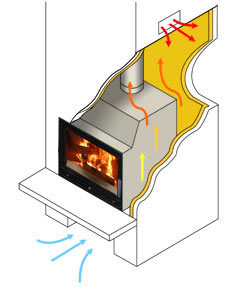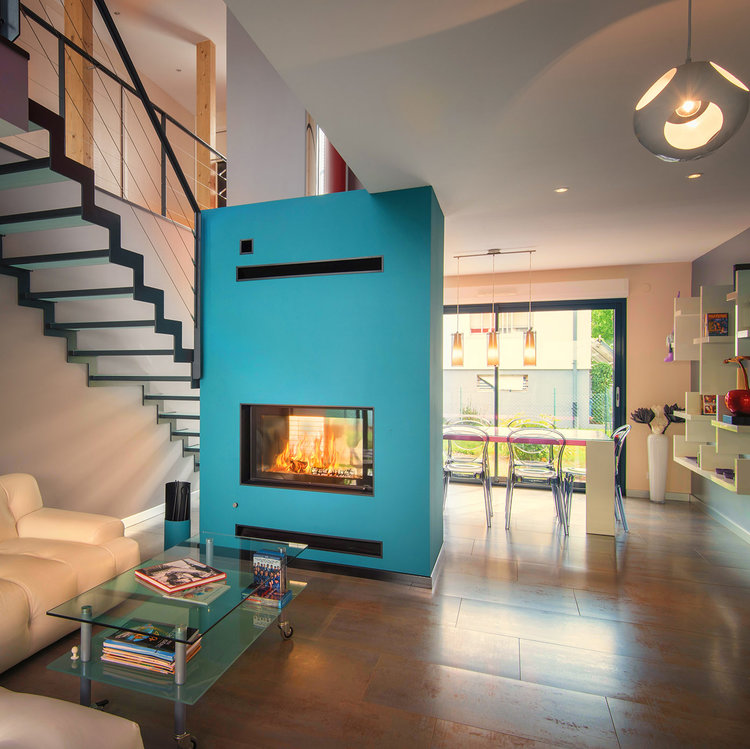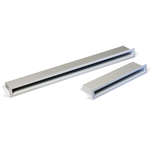Inset stove chamber ventilation
Ventilating the chamber of an inset stove
 You install an inset stove into a chamber in a wall or false chimney breast. The stove will give out a lot of its heat through the glass window, but there is still heat given out from the body of the stove. This heats the air in the installation chamber and you usually need to recover this heat to the room.
You install an inset stove into a chamber in a wall or false chimney breast. The stove will give out a lot of its heat through the glass window, but there is still heat given out from the body of the stove. This heats the air in the installation chamber and you usually need to recover this heat to the room.
You recover this heat by installing ventilation to the top and bottom of the chamber. The top vent should be larger than the bottom vent (because of the increase in volume due to the air being heated), with the exact size dependant on the type and model of stove. Boiler stoves will give out a lot less heat than dry models and so in general should need less ventilation. Some inset boiler stoves do not actually require a ventilated chamber at all.
You will be surprised at how much heat you can gain like this, just put your hand by the top vent when the stove is running to feel it.
Often these vents are placed at the sides of chimney breasts; they can also be incorporated into log stores and shelving units, or hidden behind a plaster uplighter.
Cassette stoves have two skins and heat is recovered to the room by passing air between the skins (often fan assisted). With these it is not always necessary to ventilate the installation chamber; indeed some manufacturers specify surrounding the stove and filling the chamber with insulating backfill.
It is worth taking a look at our Thermalux page. Thermalux is a self-supporting, insulating material which you can use to easily and quickly install any inset stove. It screws and glues together, can be cut with normal wood saws and to finish you simply plaster directly to it. Simple.







